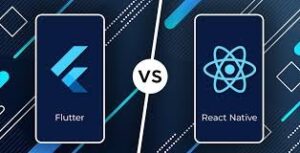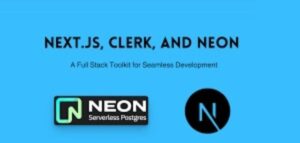
Visual Studio Code (VS Code) is a powerhouse for developers, offering a robust and versatile environment for coding in various languages. What sets VS Code apart is its extensibility, allowing developers to enhance its functionality through extensions. In this comprehensive article, we will explore the world of VS Code extensions, focusing on adding support for new programming languages, including syntax highlighting, code snippets, and IntelliSense features like code completion, parameter info, quick info, and member lists.
Table of Contents
- Introduction to VS Code Extensions
- Setting Up Your Development Environment
- Creating a Basic VS Code Extension
- Adding Syntax Highlighting
- Crafting Custom Code Snippets
- Enhancing IntelliSense Features
- Testing and Publishing Your Extension
- Conclusion
1. Introduction to VS Code Extensions
What Are VS Code Extensions?
VS Code extensions are add-ons that allow you to customize and enhance the capabilities of VS Code. Whether you want to add support for a new programming language, integrate tools, or improve your workflow, there’s likely an extension for that. Extensions are built using JavaScript, TypeScript, or Node.js, making them accessible to a wide range of developers.
Why Add Programming Language Support?
Adding support for a new programming language in VS Code can significantly improve your coding experience. It provides:
- Syntax Highlighting: Colors and styles that distinguish different elements of your code, making it easier to read and understand.
- Code Snippets: Predefined templates that speed up coding by auto-completing boilerplate code.
- IntelliSense: Advanced code editing features, including auto-completion, parameter info, quick info, and member lists.
Prerequisites
Before we dive into creating a VS Code extension, ensure you have the following:
- VS Code: Download and install Visual Studio Code.
- Node.js and npm: Install Node.js which includes npm (Node Package Manager).
2.Setting Up Your Development Environment
To start building VS Code extensions, we need to set up our development environment.
Installing yo and generator-code
The first step is to install ‘yo ‘(Yeoman) and ‘generator-code’, a scaffolding tool for creating VS Code extensions.
npm install -g yo generator-codeCreating a New Extension
With ‘yo’ and ‘generator-code’ installed, you can create a new extension project. Run the following command:
yo code
Follow the prompts to set up your extension. For example:
- What type of extension do you want to create? New Extension (TypeScript)
- What’s the name of your extension? MyLanguageSupport
- What’s the identifier of your extension? my-language-support
- What’s the description of your extension? VS Code extension for MyLanguage
- Enable Git (yes/no)? yes
This will generate a new VS Code extension project with the necessary files and folders.
Project Structure
Your project will have the following structure:
my-language-support/
├── .vscode/
├── src/
│ ├── extension.ts
├── package.json
├── tsconfig.json
└── README.md
- ‘.vscode/’: VS Code specific settings.
- ‘src/’: Contains the extension source code.
- ‘package.json’: Metadata and dependencies.
- ‘tsconfig.json’: TypeScript configuration.
- ‘README.md’: Documentation for your extension.
3. Creating a Basic VS Code Extension
Let’s start by creating a basic extension that activates when opening a file with a specific extension.
Modifying ‘package.json’
Open ‘package.json’ and modify the ‘activationEvents’ and ‘contributes’ sections to specify when your extension should be activated.
{
"name": "my-language-support",
"displayName": "My Language Support",
"description": "VS Code extension for MyLanguage",
"version": "0.0.1",
"publisher": "your-name",
"engines": {
"vscode": "^1.60.0"
},
"activationEvents": [
"onLanguage:myLang"
],
"main": "./out/extension.js",
"contributes": {
"languages": [
{
"id": "myLang",
"aliases": ["MyLang", "mylang"],
"extensions": [".mylang"],
"configuration": "./language-configuration.json"
}
]
},
"scripts": {
"vscode:prepublish": "npm run compile",
"compile": "tsc -p ./",
"watch": "tsc -watch -p ./",
"postinstall": "node ./node_modules/vscode/bin/install"
},
"devDependencies": {
"@types/node": "^14.14.31",
"typescript": "^4.1.3",
"vscode": "^1.1.36"
}
}Implementing the Extension
In ‘src/extension.ts’, implement the activation event handler. This function will run when a file with the .’mylang’ extension is opened.
import * as vscode from 'vscode';
export function activate(context: vscode.ExtensionContext) {
console.log('Congratulations, your extension "my-language-support" is now active!');
let disposable = vscode.commands.registerCommand('extension.sayHello', () => {
vscode.window.showInformationMessage('Hello from MyLanguageSupport!');
});
context.subscriptions.push(disposable);
}
export function deactivate() {}Compiling and Running the Extension
Compile your TypeScript code:
npm run compile
Open the extension in a new VS Code window:
codePress ‘F5’ to run a new instance of VS Code with your extension loaded. Open a file with the ‘.mylang’ extension to see your extension in action.
4. Adding Syntax Highlighting
Syntax highlighting improves code readability by applying different colors and styles to various code elements. Let’s add syntax highlighting for our custom language.
Creating a TextMate Grammar
Create a ‘syntaxes’ folder in your project and add a ‘myLang.tmLanguage.json ‘file. This file defines the syntax rules for your language.
{
"scopeName": "source.mylang",
"patterns": [
{
"name": "comment.line.double-slash.mylang",
"match": "//.*$"
},
{
"name": "string.quoted.double.mylang",
"begin": "\"",
"end": "\""
},
{
"name": "keyword.control.mylang",
"match": "\\b(if|else|while|return)\\b"
}
],
"repository": {}
}Modifying package.json
Update the ‘contributes’ section in ‘package.json’ to include the new syntax definition.
"contributes": {
"languages": [
{
"id": "myLang",
"aliases": ["MyLang", "mylang"],
"extensions": [".mylang"],
"configuration": "./language-configuration.json"
}
],
"grammars": [
{
"language": "myLang",
"scopeName": "source.mylang",
"path": "./syntaxes/myLang.tmLanguage.json"
}
]
}
Testing Syntax Highlighting
Compile your extension and press ‘F5’ to launch a new VS Code instance. Open a .’mylang’ file and check if the syntax highlighting works as expected.
5. Crafting Custom Code Snippets
Code snippets provide pre-defined templates for common code structures, speeding up development. Let’s add some custom snippets for our language.
Creating a Snippets File
Create a ‘snippets’ folder in your project and add a ‘myLang.json’ file.
{
"If Statement": {
"prefix": "if",
"body": [
"if (${1:condition}) {",
"\t$0",
"}"
],
"description": "If statement in MyLang"
},
"For Loop": {
"prefix": "for",
"body": [
"for (${1:let i = 0; i < 10; i++}) {",
"\t$0",
"}"
],
"description": "For loop in MyLang"
}
}Modifying package.json
Update the ‘contributes’ section in ‘package.json’ to include the new snippets file.
Testing Code Snippets
Compile your extension and press ‘F5’ to launch a new VS Code instance. Open a .’mylang ‘file and type ‘if’ or ‘for’ to see your custom snippets in action.
6. Enhancing IntelliSense Features
IntelliSense provides powerful code editing features like auto-completion, parameter info, quick info, and member lists. Let’s enhance IntelliSense for our language.
Implementing Basic IntelliSense
Open ‘src/extension.ts’ and add code to provide basic auto-completion.
import * as vscode from 'vscode';
export function activate(context: vscode.ExtensionContext) {
console.log('Congratulations, your extension "my-language-support" is now active!');
let disposable = vscode.commands.registerCommand('extension.sayHello', () => {
vscode.window.showInformationMessage('Hello from MyLanguageSupport!');
});
const provider1 = vscode.languages.registerCompletionItemProvider('myLang', {
provideCompletionItems(document: vscode.TextDocument, position: vscode.Position) {
const simpleCompletion = new vscode.CompletionItem('Hello World');
const snippetCompletion = new vscode.CompletionItem('If Statement');
snippetCompletion.insertText = new vscode.SnippetString('if (${1:condition}) {\n\t$0\n}');
snippetCompletion.documentation = new vscode.MarkdownString('If statement in **MyLang**');
return [simpleCompletion, snippetCompletion];
}
});
context.subscriptions.push(disposable, provider1);
}
export function deactivate() {}Adding Parameter Info and Quick Info
To add parameter info and quick info, implement the corresponding providers.
const provider2 = vscode.languages.registerHoverProvider('myLang', {
provideHover(document: vscode.TextDocument, position: vscode.Position, token: vscode.CancellationToken) {
return new vscode.Hover('This is MyLang code.');
}
});
const provider3 = vscode.languages.registerSignatureHelpProvider('myLang', {
provideSignatureHelp(document: vscode.TextDocument, position: vscode.Position, token: vscode.CancellationToken) {
const signature = new vscode.SignatureInformation('Function signature');
signature.parameters = [
new vscode.ParameterInformation('param1', 'The first parameter.'),
new vscode.ParameterInformation('param2', 'The second parameter.')
];
const signatureHelp = new vscode.SignatureHelp();
signatureHelp.signatures = [signature];
signatureHelp.activeSignature = 0;
signatureHelp.activeParameter = 0;
return signatureHelp;
}
}, '(', ',');
context.subscriptions.push(provider2, provider3);Testing IntelliSense Features
Compile your extension and press ‘F5’ to launch a new VS Code instance. Open a‘.’mylang’ file and test the auto-completion, hover, and signature help features.
7. Testing and Publishing Your Extension
Testing Your Extension
Thoroughly test your extension to ensure all features work as expected. Create various .’mylang’ files and check:
- Syntax highlighting
- Code snippets
- IntelliSense features
Publishing Your Extension
To share your extension with the world, publish it to the VS Code Marketplace.
1.Install ‘vsce’:
npm install -g vsce2.Create a publisher account: Follow the instructions on the Visual Studio Code Marketplace to create a publisher account.
3.Package your extension:
vsce package4.Publish your extension
vsce publish8. Conclusion
VS Code extensions are a powerful way to enhance your development environment. By adding support for new programming languages, you can improve your coding experience with syntax highlighting, code snippets, and IntelliSense features. This guide has walked you through the process of creating a basic VS Code extension, adding syntax highlighting, crafting custom code snippets, and enhancing IntelliSense. With these skills, you’re ready to unleash the full potential of VS Code and make your coding journey more efficient and enjoyable. Happy coding! 🎉





